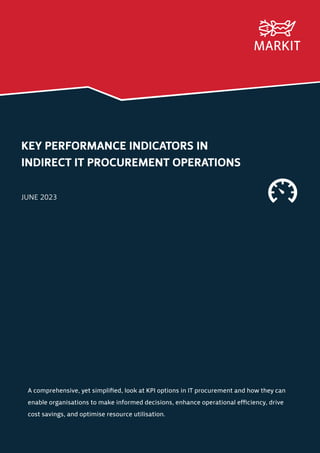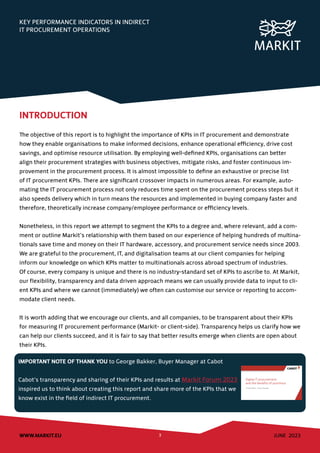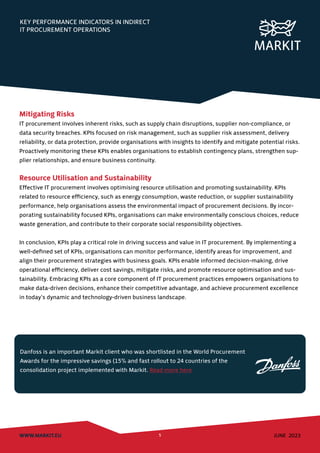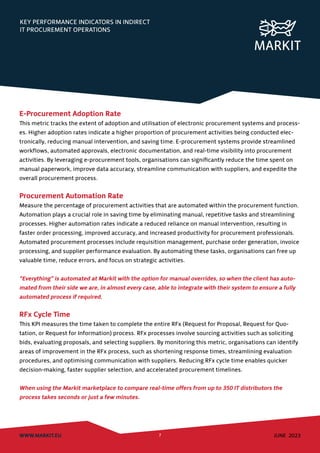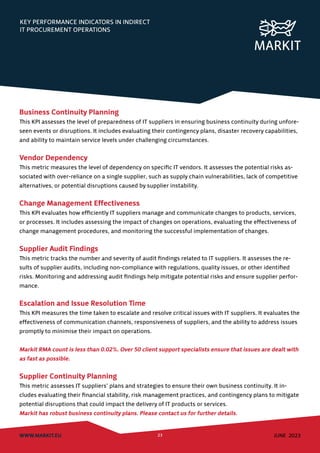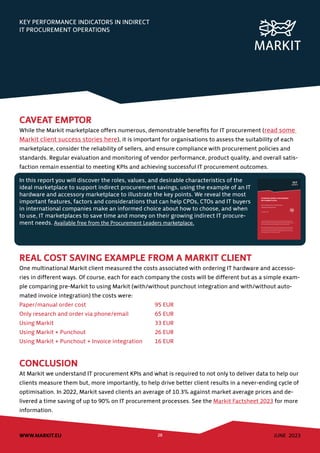The document discusses key performance indicators (KPIs) in indirect IT procurement operations, emphasizing their importance in enhancing decision-making, operational efficiency, cost savings, and sustainability. It outlines various KPIs relevant for multinationals, highlighting their role in monitoring performance, identifying improvement areas, and aligning procurement strategies with business goals. The report also stresses the significance of transparency in KPI sharing and the potential for organizations to leverage data-driven decisions to achieve procurement excellence.
